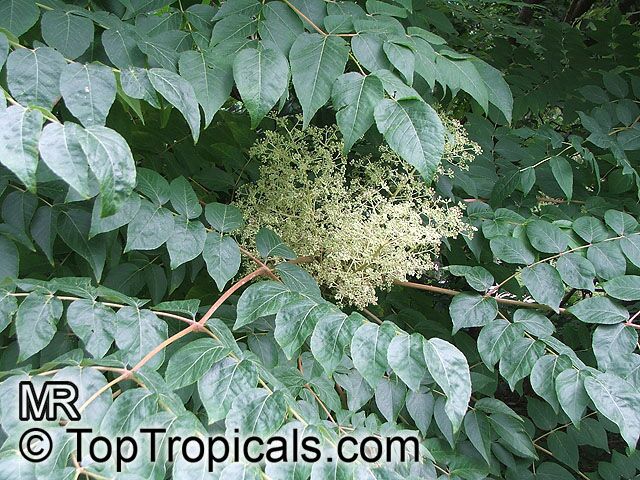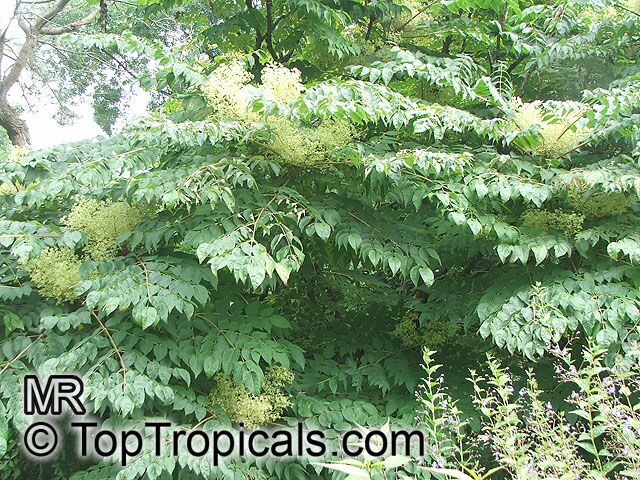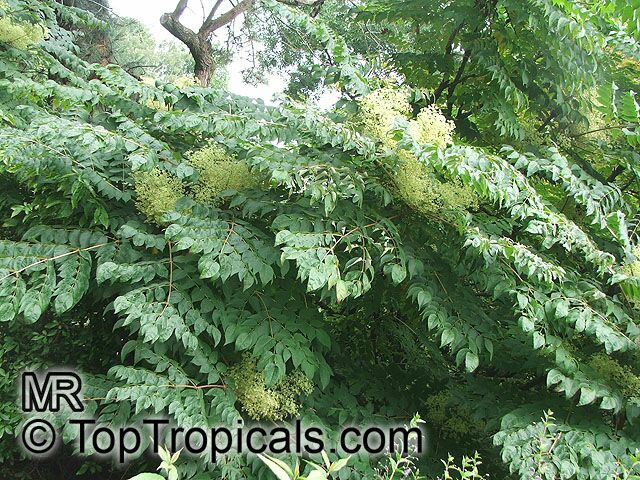Aralia chinensis (Chinese Angelica Tree)
Top Tropicals Plant Encyclopedia
Botanical name: Aralia chinensis
Common name: Chinese Angelica Tree
Family: Araliaceae
Origin: China








Aralia chinensis is a small tree, native to China, with an upright form and a rounded crown. It grows from 10-20 ft and has ornamental foliage, making it a great specimen garden shrub. This plant thrives in semi-shade and should be watered regularly with moderate water. The root and stems of this plant have ethnomedical uses. In some parts of the world, it is used as a remedy for diabetes.
The plant produces white or off-white flowers that attract butterflies and hummingbirds, making it ideal for gardeners that want to bring pollinators to the property. Aralia chinensis can be grown in USDA Zones 9-11. In cold regions, these plants can be grown in pots that are brought indoors for the winter months. Containers should be deep since the plant has a long taproot. The soil should be well-drained and amended with organic matter. Watering should be done every 1-2 weeks, with a little more in the summer months. Fertilizing should also be done during the summer months, with a slow-release fertilizer. This plant should be pruned in the early spring, before new growth appears.


